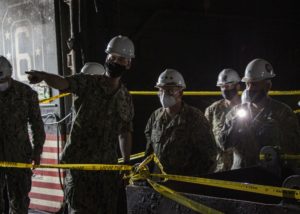
The Navy’s second highest officer told a congressional committee last week the service wants the new Naval Safety Command to evaluate safety learning and performance as the service already does for ship readiness and condition. Vice Chief of Naval Operations Adm. William Lescher said the newly converted Naval Safety Center will help inform how the service is executing safety oversight across the fleet, noting it will “include the same best practice as INSURV does - an assessment of the unit’s…

 By
By 











